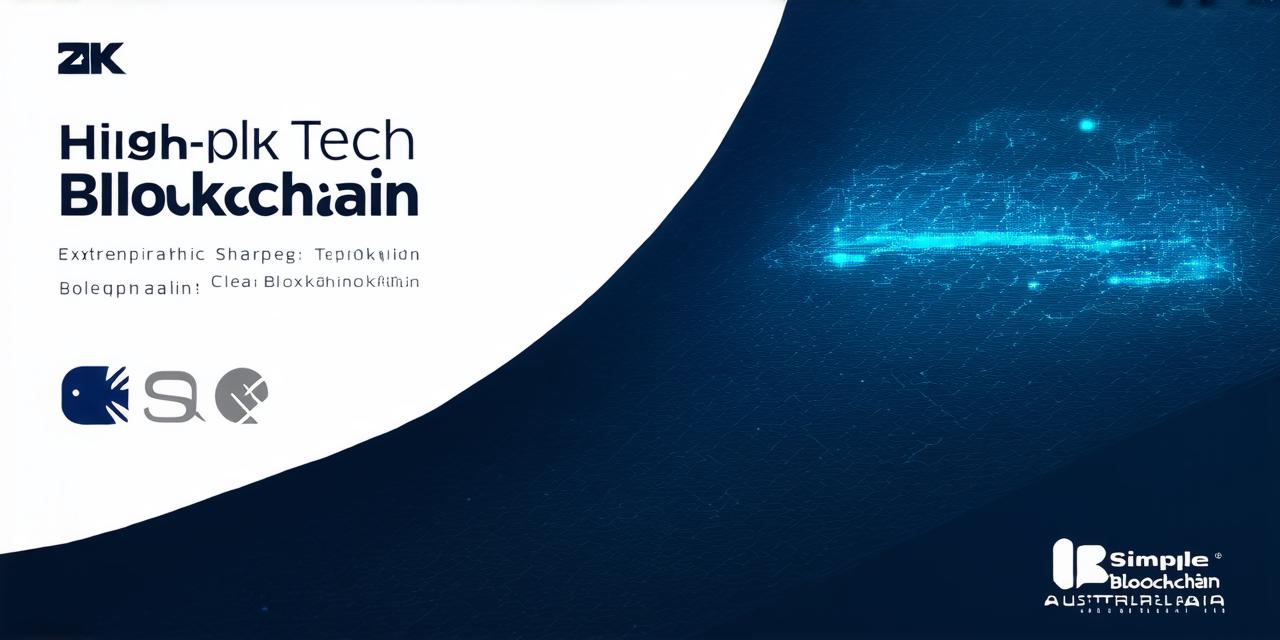Blockchain technology has been gaining immense popularity and adoption in recent years, with many businesses and organizations leveraging its decentralized and secure nature to streamline processes and improve transparency. However, as blockchain continues to evolve, so too does the concept of transparency within this space.
Introduction: The Importance of Transparency in Blockchain Technology
Transparency is a fundamental aspect of blockchain technology, as it allows for decentralized decision-making, secure data sharing, and increased trust among participants. In essence, transparency refers to the ability of all stakeholders to access and understand relevant information, ensuring that decisions are made in an open and accountable manner.
In Australia, transparency in blockchain technology is becoming increasingly important as more businesses and organizations seek to leverage its benefits while mitigating potential risks. This is particularly evident in industries such as finance, supply chain management, and voting systems, where transparency can help prevent fraud, improve efficiency, and enhance accountability.
Transparency vs. Privacy: Understanding the Differences
While transparency and privacy may seem similar, they are distinct concepts within the context of blockchain technology. Transparency refers to the sharing of information, whereas privacy concerns the protection of personal or sensitive data.
However, it is important to note that transparency and privacy are not mutually exclusive. In fact, many blockchain-based solutions incorporate both concepts, ensuring that participants can access relevant information while maintaining their privacy rights.
Benefits of Transparency in Blockchain Technology: A Case Study from Australia
One shining example of the benefits of transparency in blockchain technology is the use case of Tradefine, an Australian-based platform that leverages blockchain to streamline and secure supply chain management. By providing real-time visibility into the movement of goods, Tradefine enables participants to track shipments, verify delivery, and monitor compliance with regulatory requirements.
In addition to improving efficiency and reducing costs, transparency through Tradefine has also fostered trust among stakeholders. With all parties having access to the same information, disputes are resolved more quickly and effectively, and there is a reduced likelihood of fraud or mismanagement. Furthermore, by maintaining an immutable and tamper-proof record of transactions, Tradefine ensures that all participants have a shared understanding of the supply chain’s state at any given time.
Real-Time Data Access and Analysis
Another key benefit of transparency in blockchain technology is the ability to access and analyze real-time data. By providing immediate access to information, blockchain platforms enable businesses to make more informed decisions and respond quickly to changing market conditions.
Decentralized Governance and Decision-Making

Transparency also plays a crucial role in enabling decentralized governance and decision-making within blockchain networks. With no central authority controlling the flow of information, stakeholders can collaborate and make decisions based on merit rather than hierarchy or political influence. This can lead to more equitable and efficient outcomes, as well as increased trust among participants.
Improved Security and Fraud Prevention
By providing a shared, tamper-proof record of transactions, blockchain technology can help prevent fraud and improve overall security. In Australia, this has been particularly evident in the financial services sector, where blockchain-based solutions such as the Australian Securities Exchange’s (ASX) ASX24 platform have enabled more secure and efficient trading of equities.
Challenges of Transparency in Blockchain Technology: A Case Study from Australia
While transparency offers numerous benefits, it is not without its challenges. In Australia, one of the main obstacles to achieving true transparency within blockchain networks is the need to balance openness with privacy concerns. This can be particularly challenging in industries such as healthcare and finance, where sensitive information must be protected while still allowing for effective decision-making and collaboration.
Regulatory Compliance: Navigating the Landscape
Another challenge facing transparency in blockchain technology is regulatory compliance. In Australia, this involves navigating a complex web of laws and regulations that govern data privacy, cybersecurity, and financial services. Failure to comply with these requirements can result in hefty fines and reputational damage, making it essential for businesses and organizations to stay up-to-date with evolving regulatory landscapes.
Interoperability: Ensuring Data Sharing Across Platforms
Interoperability is another key challenge facing transparency in blockchain technology. With numerous platforms and protocols in use, it can be difficult for stakeholders to share information and collaborate effectively across different networks. To address this issue, initiatives such as the Australian Blockchain Association’s (ABA) Interoperability Working Group are working to develop standardized protocols and guidelines that promote data sharing and collaboration within the blockchain ecosystem.
Scalability: Handling High Volumes of Data
Finally, transparency in blockchain technology can be limited by scalability challenges. As more participants join a network and share information, the volume of data being processed can quickly become overwhelming. To address this issue, businesses and organizations must carefully design their blockchain-based solutions to ensure they can handle high volumes of data without sacrificing performance or security.
Conclusion: Embracing Transparency in Blockchain Technology for a Better Australia
In conclusion, transparency is a critical aspect of blockchain technology that offers numerous benefits while presenting unique challenges. In Australia, businesses and organizations are increasingly adopting blockchain-based solutions to streamline processes, improve efficiency, and enhance trust among stakeholders. By understanding the importance of transparency, navigating regulatory compliance, promoting interoperability, and addressing scalability challenges, we can harness the power of blockchain technology to create a more open, accountable, and secure future for our country.
